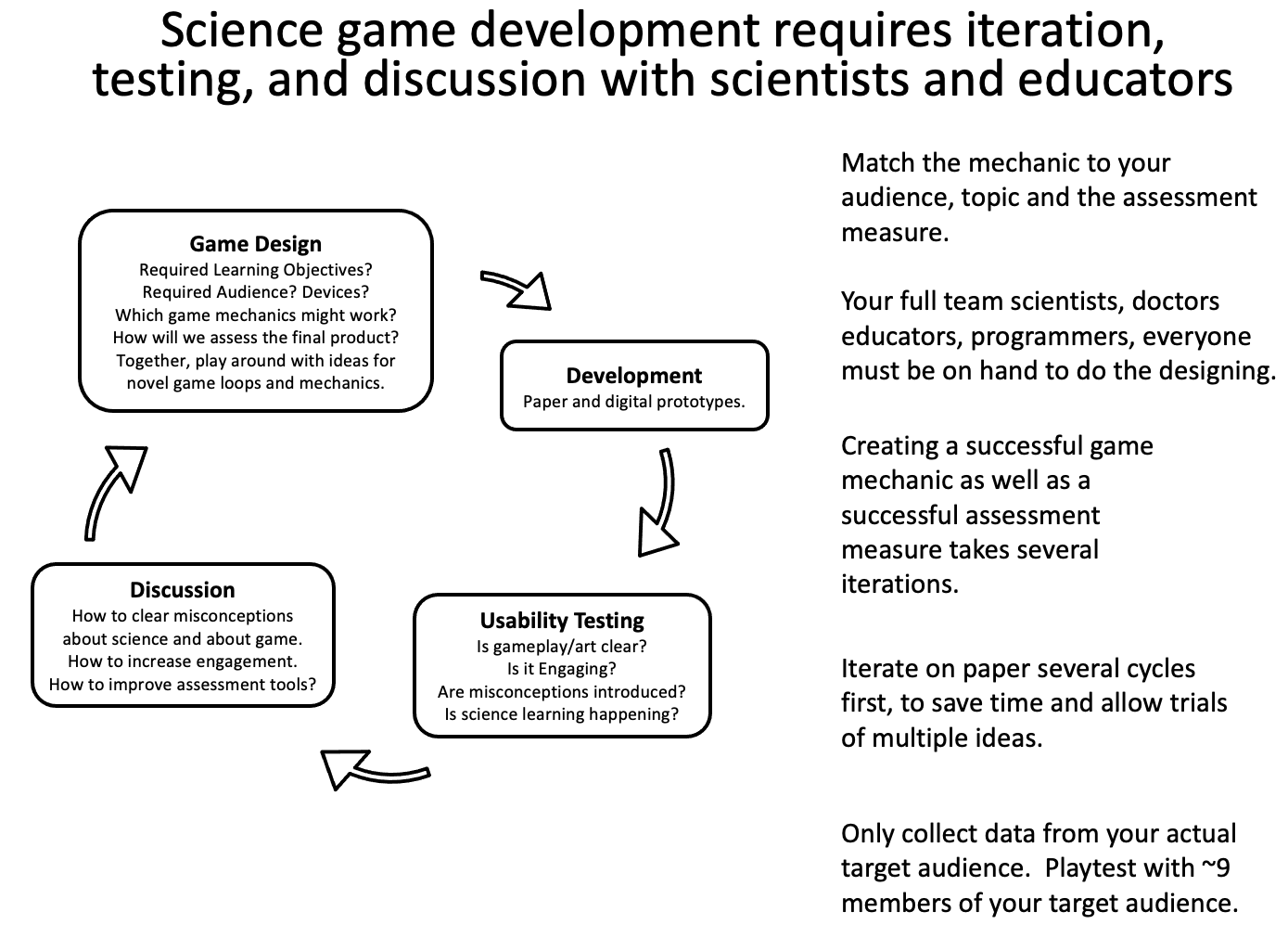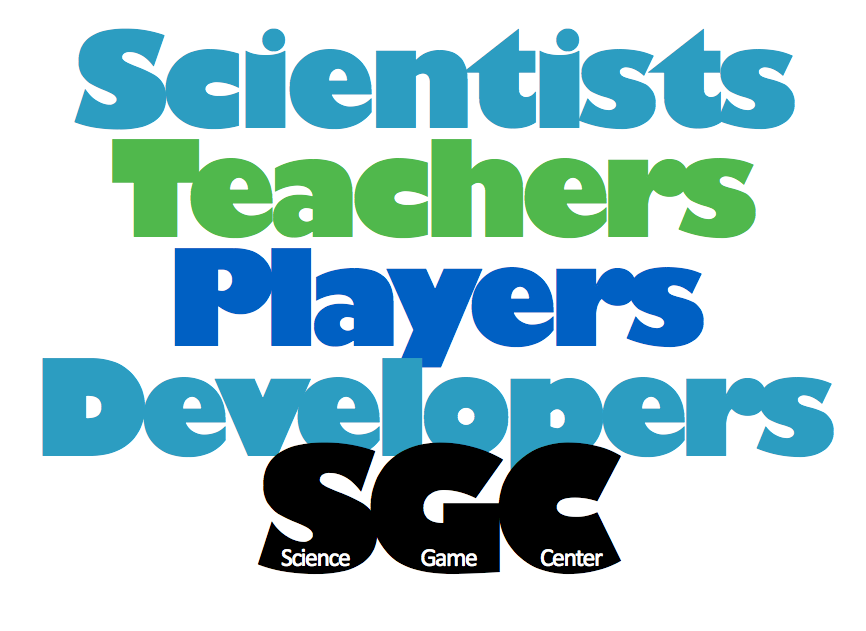This is my guide for developing novel game mechanics in collaborations with scientists, doctors, teachers, and any other kind of non-typical video game development team members. In 2010, I was the scientist learning game design and product management on the fly. Immune Defense was the result. I learned iterative game design and development. If you follow this general plan from the beginning, with a team of two developers, 1 artist, a game designer, and a scientist, you could create a game like Immune Defense in 2 years.
The game mechanic is the way your players will learn, you want your players to solve problems as real scientists would. Or, you want your players to feel a certain way, perhaps you are making a de-stressing game and your designed outcome is a lower heart rate. Whatever your definition for success is, you need your whole team to talk about it at the beginning. Test something on paper and see if your target audience’s heart rate actually decreases. It will take a week. Then analyze your data and have everyone meet up again to find creative solutions to the issues. The point is that at the top of the cycle, during the game design sessions, you decide what you want to test, what you need to develop in order to test it, and what assessment tool you will use.
When I present my game ideas to scientists, they inevitably suggest neat details that make the game more fun. When I talking with teachers, they say helpful things like, “I will be asking my students to describe these particular organelles, so if you include them in your art, that would be most effective.” In addition to your 5-person team, you will have others, such as teachers, researchers, other scientists who are part of a wider team. Involve these people in game design sessions. Host game three design sessions over the course of a week, where everyone can consider the issues you found after the playtesting session.
I would expect to iterate about 10 times; you and your team will go around this whole cycle 10 times. The first 5 on paper or very simple prototypes, and you’ll be iterating on your assessment tools as well, this can be as fast as 5 weeks to get through this. Then start doing 3 rounds of prototypes in your game engine and test it on the device you plan to use, this could take 3-6 months… plan to scrap this code and start fresh for the last 2 iterations.
Other considerations will be your tutorial/introduction. If you are using the game in a classroom or as part of a medical treatment program, your players will very likely give you 3 minutes to read an introduction, so you may be able to create an intr level or 2 that are good enough in about 3-5 iterations or three months. If you are planning to make a game to be picked up and played by random app store users then add at least a year to your schedule.
I have blogged about collaborating previously. You can see how my diagram has changed since then. Your comments and suggestions are welcome, too. For more papers and presentations, see my Research page. I am very happy to help you out with your game project. Email me at Melanie at MolecularJig com.


